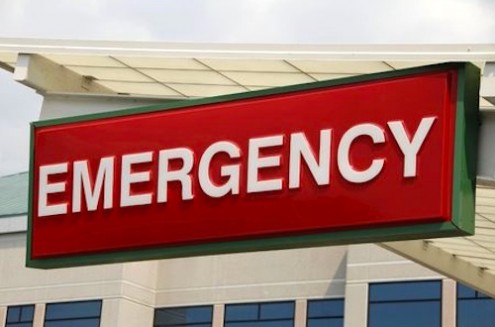A whopping 90 percent of emergency physicians said one of the top reasons patients are redirected to emergency departments is because the patients' medical conditions were more serious than what could be treated in an urgent care setting.
Why is that?
Unfortunately, urgent care centers don't have the same equipment and staffing as an emergency department. They don't have the capabilities for complex diagnoses and treatments.
What do urgent care centers treat?
Urgent care centers typically treat minor illnesses and injuries, such as sprains and minor cuts requiring stitches.
Emergency departments are prepared for every kind of medical emergency. This includes heart attacks, stroke, motor vehicle crashes, psychiatric emergencies and other life-threatening conditions.
So, how do you know if you should go to an emergency room or urgent care?
Seek urgent care for minor medical conditions or for a medical condition that could be treated in your family physician's office.
Seek emergency care if you think you may be having a medical emergency. The following are examples of warning signs of a medical emergency:
- Difficulty breathing, shortness of breath
- Chest pain or upper abdominal pain or pressure lasting two minutes or more
- Fainting, sudden dizziness, weakness
- Change in vision
- Difficulty speaking
- Confusion or changes in mental status, unusual behavior, difficulty walking
- Any sudden and/or severe pain
- Severe or persistent vomiting or diarrhea
- Coughing or vomiting blood
- Suicidal or homicidal thoughts
- Unusual abdominal pain
- Severe headache or vomiting after a head injury, unconsciousness, uncontrolled bleeding
Listen in as Dr. Ryan Stanton shares the difference between urgent care centers and ERs, as well as how to determine which one to go to if you need medical attention.

 Dr. Ryan Stanton is an emergency physician at Baptist Health Lexington in Lexington, Kentucky. He is the recipient of ACEP's 2012 National Spokesperson of the Year Award, 2014 911 Network Member of the Year Award and was named 2012 Lexington Young Professionals "Rising Star" Award.
Dr. Ryan Stanton is an emergency physician at Baptist Health Lexington in Lexington, Kentucky. He is the recipient of ACEP's 2012 National Spokesperson of the Year Award, 2014 911 Network Member of the Year Award and was named 2012 Lexington Young Professionals "Rising Star" Award.